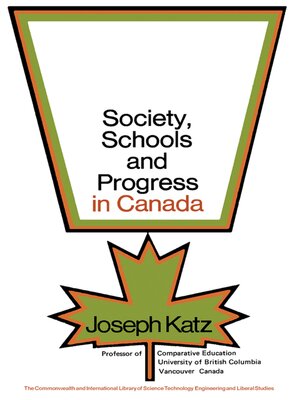Society, Schools and Progress in Canada
ebook ∣ The Commonwealth and International Library: Education and Educational Research Division · The Commonwealth and International Library
By Joseph Katz

Sign up to save your library
With an OverDrive account, you can save your favorite libraries for at-a-glance information about availability. Find out more about OverDrive accounts.
Find this title in Libby, the library reading app by OverDrive.



Search for a digital library with this title
Title found at these libraries:
| Library Name | Distance |
|---|---|
| Loading... |
Society, Schools and Progress in Canada provides insights into the way people from various cultures live and work together, thereby building a new society. The book briefly describes the history of the transformation of Canada in terms of its social, economic, and political institutions. The change from a rural and agricultural to an urban and industrial country affects the way of life. This change makes local and migrant people find security through education. After tracing the roots of the different people making up Canada, the societies and communities found in the country are explained through demographics. The author then notes that changes in attitude toward health care, physical developments, and social work naturally followed. A big part of the book deals with education, explaining the educational set-up of the country that includes denominational and military schools. Additional detail is then given to primary, elementary, secondary schools, and to colleges and universities. The training and education of elementary, secondary, vocational, and teachers are discussed. The role of technology, such as television, radio broadcasting, and computers, in education are described. Although Canadian educational facilities are considered one of the best in the world, the book looks into possible reforms covering administration, school grounds and buildings, curriculum, and educational organizations. Special topics such as religion in schools, sex education, penitentiary programs, and an increasing population are also discussed. The text makes for interesting and informative reading for educators, historians, students and teachers in education, and migrant families to Canada.







